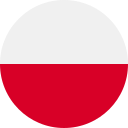Lista Słówek Poziomu C2 - Biology
Tutaj nauczysz się wszystkich niezbędnych słów do mówienia o biologii, zebranych specjalnie dla uczących się na poziomie C2.
Przegląd
Fiszki
Pisownia
Test

a tiny structure within cells that assembles proteins by reading the genetic instructions carried by messenger RNA

rybosom
a cellular organelle involved in the processing, packaging, and distribution of proteins and lipids within the cell, consisting of a stack of flattened membrane sacs called cisternae

Aparat Golgiego, Kompleks Golgiego
a small, enzyme-filled sac in a cell that breaks down waste materials and unwanted substances

lizosom, pęcherzyk wypełniony enzymami
an organelle that is abundantly present in most cells and is responsible for energy production

mitochondrium, organellum produkujące energię
a plant cell organelle that uses sunlight to produce energy and make glucose through photosynthesis

chloroplast, organellum fotosyntetyczne
a molecule that forms the basic building block of DNA and RNA, consisting of a sugar, a phosphate group, and a nitrogenous base

nukleotyd
a linear chain of amino acids linked by peptide bonds, forming a primary structure of a protein

polipeptyd, łańcuch polipeptydowy
a specialized, membrane-bound structure within a cell that performs specific functions, contributing to the cell's overall structure and function

organellum, organella
a cell organelle in plants, fungi, and some protists that stores nutrients, manages waste, and helps maintain cell pressure

wakuola, pęcherzyk
a pair of small cylinders near the nucleus in animal cells, organizing cell division by forming the mitotic spindle

centriola, para centrioli
a type of protein that plays a structural role in the packaging of DNA into nucleosomes, fundamental units of chromatin

histon, białko histonowe
a repetitive DNA sequence at the end of a linear chromosome, protecting it from deterioration during replication, and playing a role in cellular aging and cancer development

telomer, końcówka chromosomu
the observable physical and behavioral characteristics of an organism, resulting from the interaction of its genotype (genetic makeup) with the environment

fenotyp, obserwowalne cechy
the tendency of an organism or cell to regulate its internal environment and maintain a stable, balanced condition, despite external changes

homeostaza, równowaga wewnętrzna
the process by which the information encoded in the sequence of nucleotides in DNA is converted into a functional product, typically a protein

translacja, translacja genetyczna
the process by which a segment of DNA is used as a template to synthesize a complementary RNA molecule

transkrypcja, proces transkrypcji
the process by which an organism duplicates its genetic material, particularly the copying of DNA in cell division

replikacja
a sequence of three adjacent nucleotides in mRNA that codes for a specific amino acid during protein synthesis or serves as a start or stop signal in the translation process

kodon, sekwencja kodonów
a close and often long-term interaction between two different species living in close physical association, typically to the advantage of both

symbioza, związek symbiotyczny
a single-celled, microscopic organism belonging to the group of protozoa, characterized by a flexible cell membrane and the absence of a fixed body shape

ameba, ameby
a simple, single-celled organism that lacks a true nucleus and membrane-bound organelles, such as bacteria and archaea

prokariot, organizm prokariotyczny
a green pigment found in all green plants and cyanobacteria that is responsible for the absorption of the sunlight needed for the photosynthesis process

chlorofil, zielony barwnik
the protein coat of a virus that encases its genetic material and helps it attach to and enter host cells during infection

kapsyd, płaszcz białkowy
a type of living thing with cells that have a nucleus and other structures enclosed in membranes, like plants, animals, fungi, and some microorganisms

eukariont, organizm eukariotyczny
a mature, female reproductive cell or egg, typically larger than a sperm cell, capable of fusing with a sperm cell during fertilization to form a zygote

komórka jajowa, jajo
an enzyme produced in the stomach that helps in the digestion of proteins by breaking them down into smaller peptides

pepsyna, enzym trawiący białka
a molecule that carries energy within cells, composed of adenine, a ribose sugar, and three phosphate groups

adenozynotrifosforan, trifosforan adenozyny
a gas, especially methane, that is produced as a result of the decomposition of animal or plant remains, which is used as fuel

biogaz, gaz odnawialny
a network of protein fibers in a cell that gives it shape, supports its structure, and aids in movement

cytoszkielet, szkielet komórkowy
| Lista Słówek Poziomu C2 |
|---|